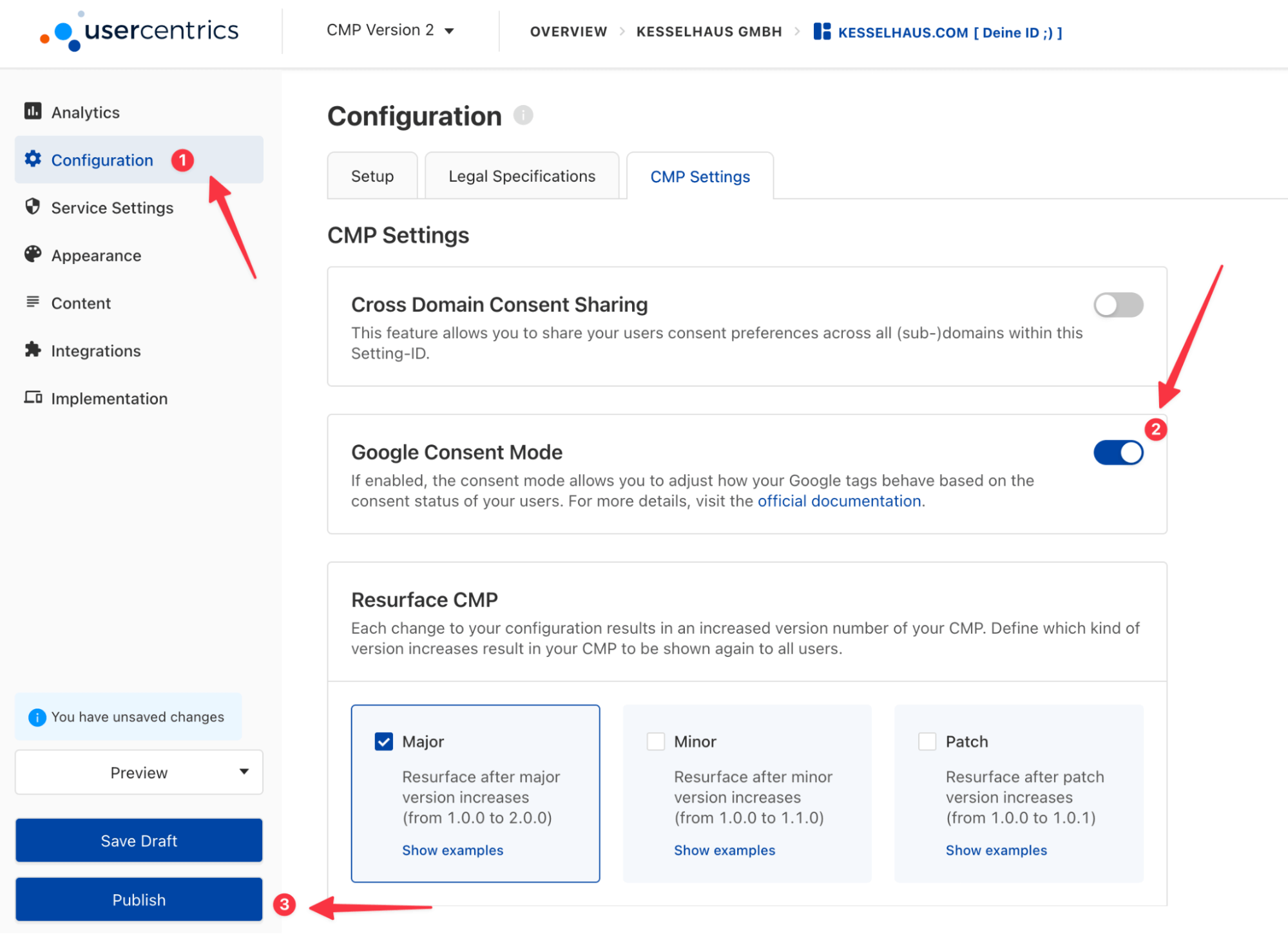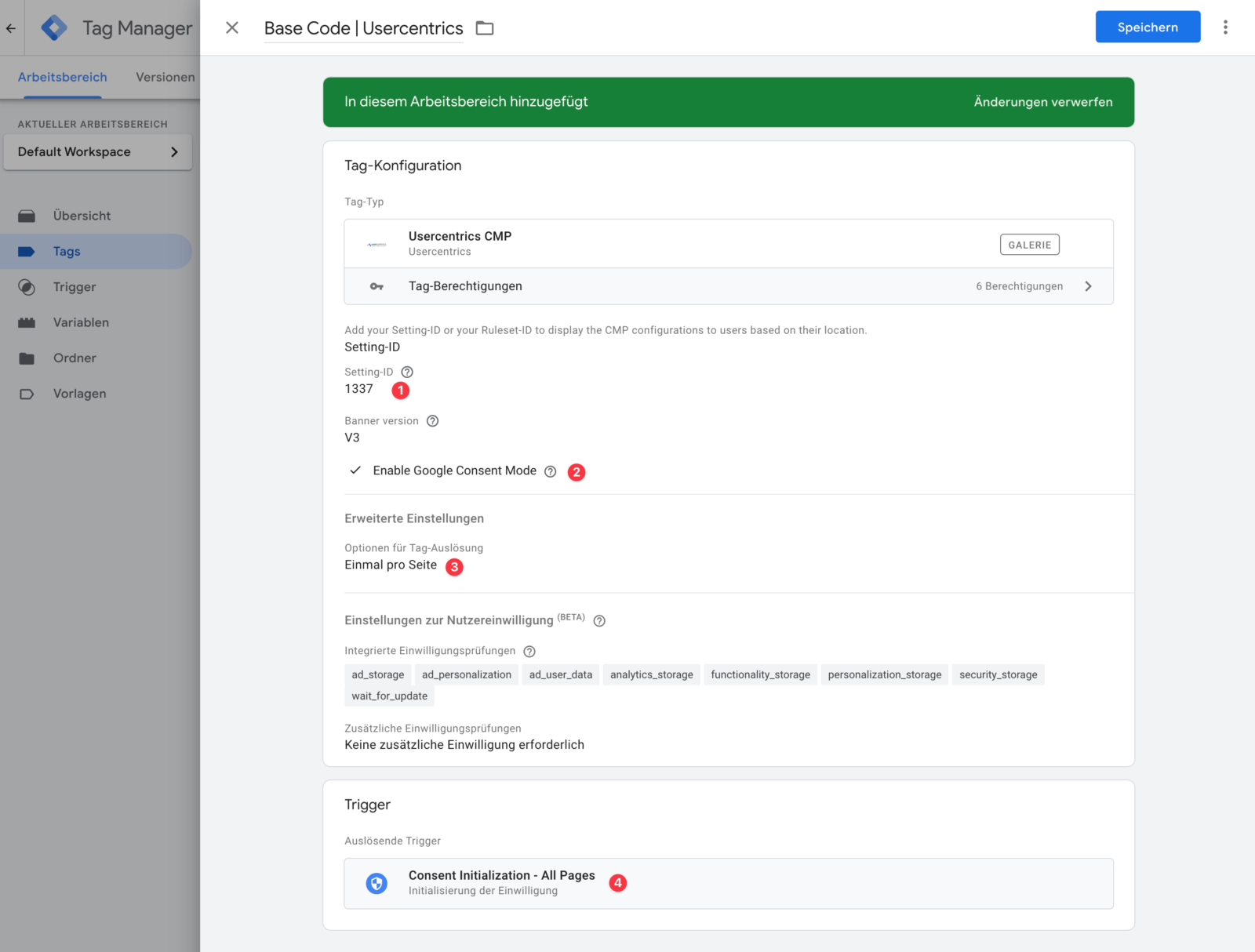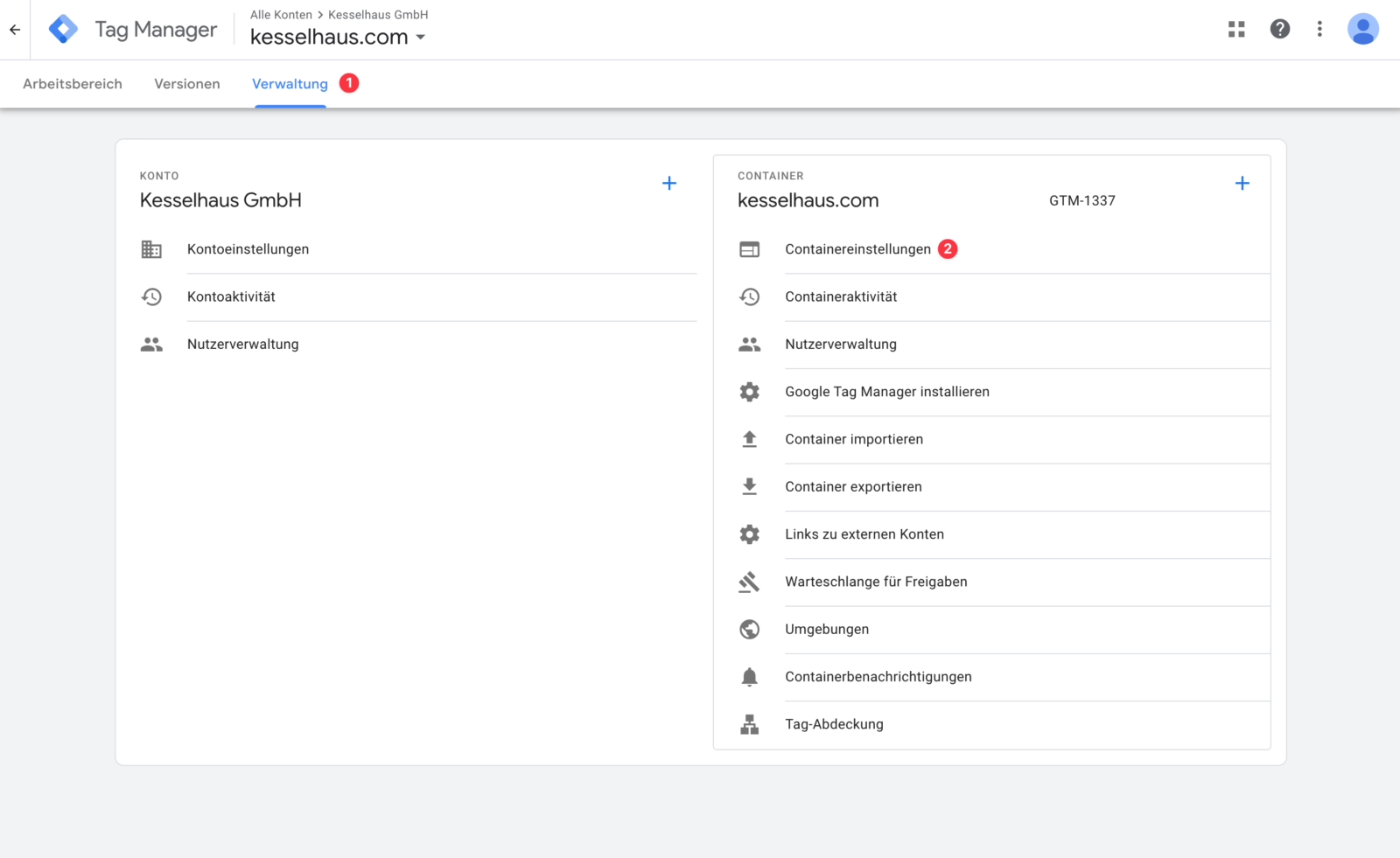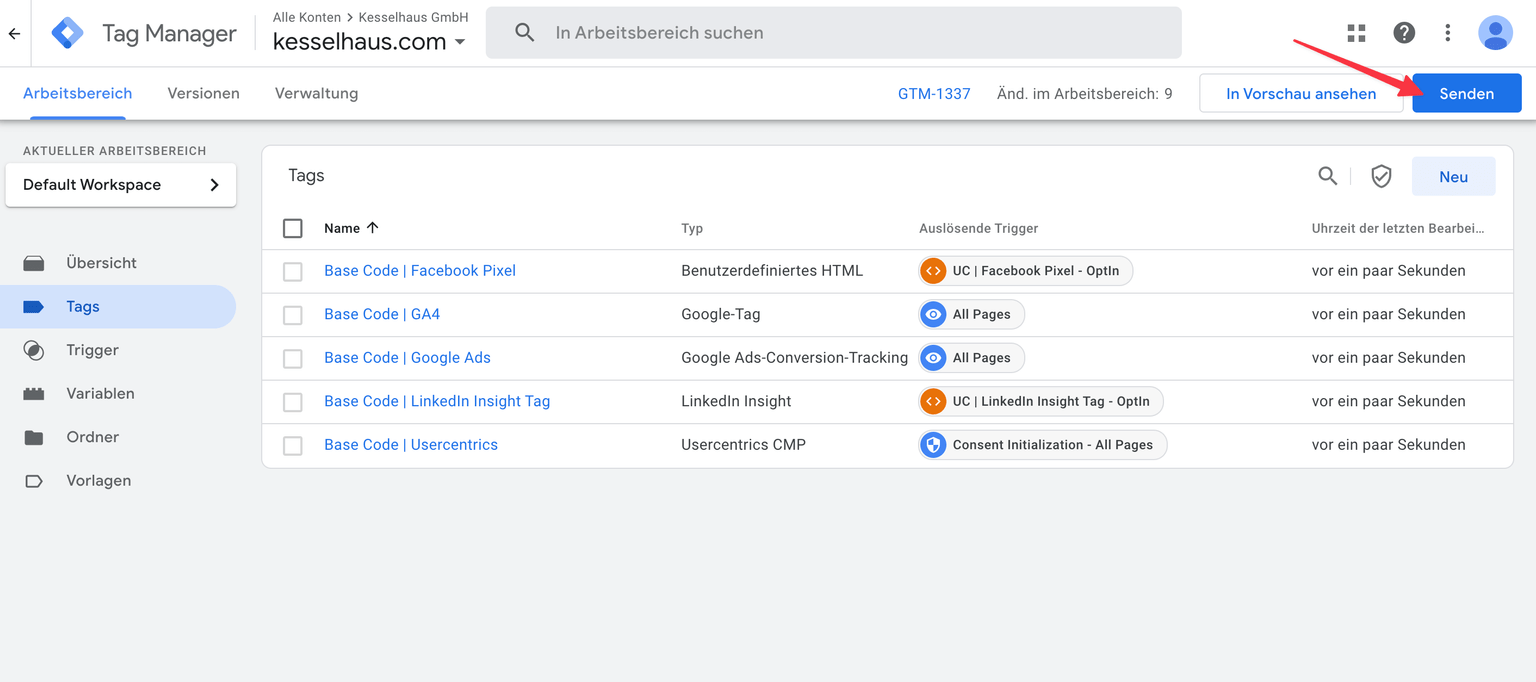Since the introduction of the GDPR on 25 May 2018, the online marketing world has changed dramatically. Consent banners have become mandatory and website operators must obtain user consent for every third-party service. Although this improved data protection, the effectiveness of online advertising decreased significantly due to the lack of conversions.
Stefan, what impact does Google Consent Mode have on your work as an agency and how can companies use this to both comply with legal requirements and implement effective marketing strategies?
For agencies and companies that work with WordPress and want to run successful online advertising campaigns, it has become essential to meet these new requirements in order to continue advertising profitably. This is exactly where Google Consent Mode v2 comes into play and provides some relief. I am happy to share my knowledge about what this mode is exactly, how agencies and companies can use it and why they should have set it up by 6 March 2024. Here we go!
Disclaimer: This article does not claim to be completely comprehensive – we could delve deep into the technical details of this topic in particular. Stefan wants to give you, as an employee:in a WordPress agency or company or as a WordPress professional, an easy-to-read and understandable guide so that you get a good overview of Consent Mode v2 and also know how to implement it in your organisation. You can find plenty of technical details yourself in the Google documentation.
What exactly is Google Consent Mode v2?
Basically, this is Google’s response to the strict European data protection guidelines and cookie usage for tracking. Previously, there was Consent Mode v1, introduced in 2020, to provide website operators with an initial remedy and bring data collection in line with data protection regulations. However, version 1 was not really actively used, as there was no obligation on the part of Google to do so.
Since 6 March 2024, Google Consent Mode v2 has been in place, which is officially prescribed by Google and responds to the evolving requirements of data protection laws such as the GDPR. This means that if website operators do not implement Google Consent Mode v2, they will no longer be able to use certain functions – more on this later.
But what does Google Consent Mode v2 actually mean? It allows you to automatically control the behaviour of Google services such as Google Analytics 4, Google Ads, Conversion Linker etc. based on the user’s consent or refusal in the consent banner. Sounds complicated, doesn’t it?
Think of Consent Mode as an interpreter for Google services:
- If a user agrees in the consent banner, all requested data is collected and processed.
- However, if the user declines, Google can still collect limited data in order to deliver essential conversions to its own services, but without jeopardising the user’s privacy.
A smart way to get the best of both worlds, isn’t it?
By the way: Google Consent Mode only takes care of Google’s own services and not others, such as Facebook Pixel! This will become clearer in the graphics.
How Google Consent Mode works
To understand how the Consent Mode works, you first need to know how the respective services have been played out since the introduction of the GDPR in 2018.
Here is a simplified graphic:
Without activated Google Consent Mode

The Consent Banner or Cookie Banner such as Borlabs, Usercentrics, Cookiebot has so far had direct control over the display of all third-party services.
However, if Google Consent Mode is activated, it is added as an intermediate layer and acts as a kind of interpreter between the consent banner and the Google services. Depending on the user consent given, it either ensures precise data collection or limited collection.
I’ll explain later why this is a game changer for online marketing. This is what the graphic looks like:
With Google Consent Mode activated

If that were all, then it would be too easy. In fact, Google Consent Mode is available in two different versions, as this Google solution for ensuring data protection is also controversial among data protection experts: Basic Mode and Advanced Mode.
Basic Mode vs. Advanced Mode
As you can see from the title, there are two types of implementation that can be traced back to data protection. You have already heard that Consent Mode either allows Google services to collect full data or, depending on consent, to collect only limited data. This is precisely the problem that data protectionists are criticising.
If user consent is not given, no cookies are set, but so-called Google Pings are transmitted to the respective services, which indicate whether a conversion has taken place or not. This allows Google to artificially remodel missing data without cookies and thus increase the effectiveness of Google Ads, for example.
Depending on the mode, Google Pings can send more or less data for conversion measurement. For this reason, they are controversial and therefore there are also these two implementation variants: Basic Mode and Advanced Mode.
You would need to clarify with your data protection officer which of these you are allowed to use.
This is how Google defines the two variants in its own documentation:

I’ll summarise it in my own words:
1. basic consent mode
Consent has been given: If the user gives their consent for Google services in the consent banner, cookies are set and the user is tracked.
No consent: If the user rejects all Google services in the consent banner, no cookies are set and the user is not tracked. Nevertheless, data modelling takes place in a very simplified and more general form. According to Google, this is based on the browser type, the conversion type and other superordinate, non-identifying variables.
Your advantage: With this mode, you are on the safe side in terms of data protection.
Your disadvantage: You still do not have complete data.
2. advanced consent mode
Consent has been given: If the user gives their consent for Google services in the consent banner, cookies are set and they are tracked as normal.
This means: With consent, the behaviour in Advanced Mode is identical to Basic Mode. Now it gets exciting, the Consent Mode Magic unfolds its full power here:
No consent: If the user rejects all Google services in the consent banner, then no cookies are set, BUT detailed pings are transmitted, so that Google can artificially model missing conversions very well.
Your advantage: According to Google, you receive up to 70 % more data (ad-to-click conversions). As a result, Google campaigns can be played out more effectively.
Your disadvantage: This mode poses a challenge from a data protection perspective. You must clarify with your contact person for data protection whether you are authorised to use the advanced mode.
The 3 most important advantages of Google Consent Mode v2
Let’s now take a closer look at the most important advantages that Google Consent Mode v2 has to offer:
Better display of adverts
As previously mentioned, the artificial remodelling of conversions (advanced mode implementation) makes up to 70% of the data visible again. More and better data means that the Google Ads algorithm can target campaigns more precisely to your target group. This reduces your advertising costs and you get more for your money.
Preservation of valuable advertising functions
Google Consent Mode v2 has been mandatory on the part of Google since 6 March 2024 and is also being actively pushed. If you want to continue using functions such as remarketing, GA4 target groups and all personalisation tools, then Google Consent Mode v2 is a must for you. In addition, further functional restrictions may be added over time if you do not use Google Consent Mode v2.
Automatic tag management
If you have already worked with the Google Tag Manager, then you certainly know how tedious it is to marry the Consent Banner with the respective Google services so that no advertising measures are triggered without user consent. This is where Consent Mode v2 provides a remedy, as it works hand in hand with the Google Tag Manager. This means that you no longer have to manually intervene to control the tags based on user consent – the system does it for you. Admittedly, the tag simplification unfortunately only applies to Advanced Mode. In basic mode, the effort is not reduced.
Implementation of Google Consent Mode v2
Now you know why Google Consent Mode is so important. In this section, we’ll get down to business and I’ll show you how to implement Consent Mode v2 on your WordPress site. Don’t worry, it’s not as difficult as it sounds. I’ll take you through the process step by step.
Since we are a performance agency ourselves (Kesselhaus GmbH) and data is extremely important for our work, I will of course outline the Advanced Google Consent Mode in this guide. Most of our clients have had no problems with their data protection departments so far.
As a reminder: Which variant you are allowed to use depends on your data protection officer.
1. set up Consent Banner
It is a prerequisite for using Google Consent Mode that you use a Google-certified Consent Banner. The Consent Banner must support Google Consent Mode v2 – otherwise you cannot set it up. We have had good experiences with Usercentrics, for example, and use it in all our customer projects. In our experience, another good consent banner is Cookiebot, which also supports the new Google Consent Mode v2.
Example for Usercentrics:
Log in to Usercentrics, activate Google Consent Mode in Configuration and save so that Usercentrics can transmit the user’s consent to the Google Consent Mode API.

2. set up Google Tag Manager
If you are not yet using Google Tag Manager (GTM), now is the perfect time to set it up. It is the central tool for managing all your marketing scripts and tags without having to fiddle around in the website source code.
After the setup you will receive a special code from the GTM, which you should insert as the very first script in your HTML-Head as the very first script. With the free WordPress plugin “WPCode – Insert Headers and Footers“, for example, you can output HTML codes in your HTML header relatively easily.
For the example here, I am setting up GA4 and Google Ads Conversion. Make sure that you select “All Pages” as the trigger for all Google tags. This is because we want to set up Advanced Mode so that Google automatically decides whether to set cookies or send Google Pings instead, depending on consent. In basic mode, a user-defined trigger would have to be set up.

I would also advise you to install the actual Usercentrics code directly via the GTM as a template. Both Usercentrics and Cookiebot offer an official GTM template for their Consent Banner, so that you can make important Google Consent Mode settings with just a few clicks and easily keep the Consent Banner up to date. It is best to make the settings as shown in the screenshot. For the Setting ID, you can of course add your own.


3. activate GTM Consent Mode
As soon as the Tag Manager has been set up, you can now activate Consent Mode in GTM. To do this, go to the GTM container settings and tick “Activate consent overview” and save the whole thing.


4. customisation of the tags
You can now customise the tags according to the consents. In your GTM tag view, a new symbol (tick with shield) has now been added next to the “New” button. As we want to set up the Advanced Mode, we now need to define the Consent Mode for all tags in the GTM so that no additional consent is required.
To do this, click on the new shield symbol, select all tags and tick the “No additional consent required” box and save. Done.



5. test, test, test
Before you switch Consent Mode live, you should test it extensively. Check whether the tags are triggered as desired and whether the data is recorded correctly. GTM has its own preview mode for this purpose, see screenshot.

6. go-live
Once everything has been tested, you can activate Consent Mode on your site. Remember to check the changes regularly to make sure everything is running smoothly.

Conclusion
Google Consent Mode v2 is a powerful tool that helps you to make your WordPress website compliant with data protection regulations without having to forego important Google Analytics data or profitable Google Ads campaigns.
Remember that data protection is not only a legal necessity, but also a matter of trust between you and your users. By being transparent and respectful with your visitors’ data, you build trust in the long term and increase the loyalty of your users.
Now it’s your turn! Implement Google Consent Mode v2 on your website and take the next step towards successful advertising campaigns that respect data protection.
A few words about Kesselhaus
Stefan Sommerfeld is Head of Technical Solutions at Kesselhaus GmbH. With several years of experience as a web developer for TYPO3 and WordPress projects, he specialises in developing websites with strong sales potential. Stefan and his agency support companies in making the most of their web presence and presenting their expertise effectively online. With a keen eye for detail and a passion for SEO, advertising psychology and well thought-out user experience, he brings every concept to life.
The Kesselhaus marketing agency is a German full-service agency from Offenburg that specialises in performance marketing and lead generation. With targeted online advertising and well thought-out conversion funnels, they support B2B and B2C companies in reaching their target groups effectively and achieving sustainable growth.
Google Consent Mode V2 with Iubenda (Webinar)
In this webinar on Google Consent Mode V2, Götz Sielk from our partner company Iubenda explained to us how data protection-compliant marketing works with the Iubenda solution. Take a look at our webinar now:


Leave a Reply